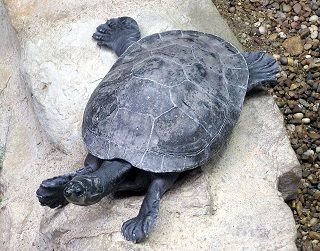From Guest Blogger Dr. Bulb: How to Prevent the Devastating Effects of Light Pollution on Wildlife

Light pollution is the introduction of artificial light into the environment by humans. An excessive amount of artificial light can cause a variety of issues. For humans, it obscures the view of stars in the night sky, disrupts sleep, and can cause safety hazards for drivers. This past August, NPR even discussed light pollution in Light Pollution and ‘The End Of Night.’ But while most humans no longer rely on the stars, animals depend on them for survival. For animals, light pollution can alter their natural instincts and have a devastating effect.
Excessive artificial light is more prevalent with HID lamps, like the high-pressure sodium lamps that are used in many street lights. Traditional street lamps scatter up to 20% of their energy horizontally or vertically, instead of where it actually needs to be. Not only does this waste energy, it contributes to light pollution. Extensive research has demonstrated that light pollution disturbs ecosystems in detrimental ways, impacting circadian rhythms, biological clocks, reproduction, feeding and other natural instincts.
Nocturnal birds use the stars and moon for navigation during bi-annual migrations, according to National Geographic. When they fly into brightly lit areas, the birds become disoriented and often fly into towers or buildings, or circle until they die from exhaustion. They never reach their destination due to excessive artificial light.
Newly-hatched sea turtles need a dark sky to orient themselves towards the sea, but artificial white light from housing units, outdoor lighting, and street lights on developed coastlines cause them to be confused. The turtles end up being eaten by predators or wandering inland towards roads and busy boardwalks.
Nocturnal animals, like bats and mice, depend on the darkness at night to either hunt or hide from predators. The list does not stop there. Light pollution has adverse consequences for countless species across the globe.
But how do we avoid disturbing ecosystems when we’ve become accustomed to brightly-lit areas? Some solutions include turning off unnecessary lights, or directing light towards the ground instead of up towards the sky. LED lighting also helps eliminate light pollution. Unlike other lighting technologies, LEDs are a directional light source, so they only illuminate necessary spaces instead of surrounding areas.
Cities across the world have started to convert to LED street lights. Forbes reported that Los Angeles recently completed the most expansive LED street light replacement program in the world by replacing 140,000 street lights. Besides creating light pollution, the high-pressure sodium lamps they replaced released 110,000 metric tons of carbon dioxide into the atmosphere. The new LED lights reduce carbon dioxide emissions by more than 47,000 tons. Additionally, the LED lamps consume about 63% less energy. And of course, they help reduce light pollution, which lessens the negative impact on ecosystems.
Luckily, many coastal locations have minimum standards that require turtle-friendly lighting during sea turtle nesting season. Using turtle-friendly amber LEDs allows humans to safely light waterfront properties without disturbing sea turtles. While turtles can see higher color temperatures used in fluorescent or incandescent light sources, they cannot see longer wavelengths like 590 nm used in amber LEDs. The Florida Fish and Wildlife Conservation Commission lists ways to minimize adverse effects to wildlife by using proper lighting methods, including how to protect sea turtles.

I’m not sure how much sympathy or concern there will be for bats and mice…
While this is a problem for many nocturnal species, it seems like these species should adapt within a generation to higher light pollution levels.
The turtles – being endangered – are a bigger concern, but as stated most people who live along coastlines that have turtles already have a great respect for the animals.. and already have taken steps to minimize the harm. Many turtle hatchery grounds are protected wildlife areas without any unnatural light for tens of miles.
But bats and mice don’t get much sympathy… nor do moles or opossums or any of the other stereotypical nocturnal animals.
I don’t know… I’m far more concerned about the emissions caused by the power industry that is used to keep the lights on than I am concerned about the lights themselves. I’m also more concerned about physical waste that animals are poisoning themselves with or choking on or drowning themselves with… … It just seems that of all that we are doing it’s hard to imagine that light is a major injury we are inflicting on the natural world.
Perhaps I have too much faith in evolution, and I simply believe that the owls and raccoons and wolves will figure it out, or perhaps I’ve really missed the boat on this and it’s a significant problem… I don’t know.
I am a champion of switching all streetlights to high efficiency LED’s. In that, we are certainly on the same page.